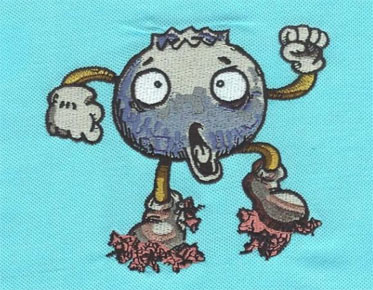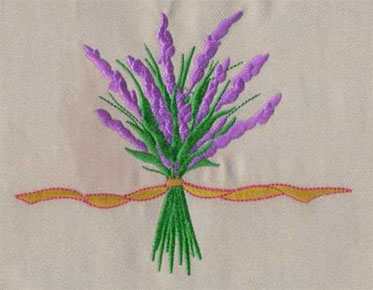3 Truths from Machine Embroidery Digitizing
No matter if it's your first time learning embroidery digitizing or you've tried it, you'll be able to create an amazing design by digitizing it. Here are three things about digitizing that will make your creative wheels spin fast and easy.
1. There will always be distortion.
Make no mistake, the pins you create on the
screen are definitely not represented as threads the way you place them in
software. So you have to understand how machines can twist your work and be
prepared for it. Push and pull compensation will become a part of your
embroidery life, and if you want your outlines to line up, the joints won't
turn into gaps. Always keep this in mind: what looks perfect on screen will
result in distorted embroidery in the thread. If everything in the digitized
file lines up on the edge of the razor, expect to see gaps, bleeds and outlines
unmarked. The best designs you'll run have weird uneven bits, gaps, and weird
angles in their files, and yours (when executed correctly) should too. Don't
convince yourself that stitching will work just because it looks interesting on
screen. Measure your stitches on the file, then again in your finished product
- it won't be long before you see what I mean. In the end, you'll learn to
trust that the odd overlaps and gaps you've purposely created to compensate
won't show up in your finished product.
2.
You will stitch the failed
sample.
When you digitize your designs, especially if you are trying out any new techniques, or are working with new materials, you have the chance to fail. this is normal. I've been working digitally in business for 15 years as a full-time professional, and in the past week I had to redesign one of my designs fairly extensively - twice. Granted, I rarely need to edit much - my first attempts are usually mass production, but this comes with a lot of material experience, starting with the operator of the embroidery machine, and after years of digitizing and testing, even this doesn't work Prevents me from occasionally going back to my software for revisions after seeing the first run of a new design. This means that any project worth doing is worth sampling first (especially if you're embroidering anything that's difficult or impossible to replace). Get the fabric that matches your finished product as closely as possible, and run a design to test it under the same conditions, using the same support material you will use for the finished product. If you have critical bugs, fix them and ideally run again before going to final production. You'll do less testing and retesting over time, but you should never assume your days of trial and error are over. Every new combination of design and structure potentially puts you back in the test and analysis loop. This is to be expected, and in my opinion, one of the most rewarding (if at times frustrating) jobs in the craft.
3. Machine embroidery has limitations
I could hear the collective cries of
"small print" and "color mixing" from young digitizers in
purgatory who initially struggled with the media's limitations. If you know
from the beginning what embroidery can't do, or at least what makes it so
difficult, you'll be better prepared to explore all the things it can do and do
it well. Remember, this is the interaction of physical objects that have
measurable and fixed characteristics that define how they behave during
stitching. Threads have thickness, fabrics have the way it likes to stretch,
needles make holes of a certain size, and these things inform how they are
stitched. While technique and artistry are about how you use your materials and
will definitely change the quality of your results, there are some physical
truths that no amount of creativity can ultimately change. Thread is thread and
not ink, and machine embroidery in particular doesn't offer the precise control
over hand embroidery on every stitch, so you have to make some small
concessions to the artistic nature of your designs. In the end, you'll find
that patient, creative, and curious machine embroiderers can push the limits of
what machines and threads can do, to the point where the limits seem trivial.
The speed and repeatability of machine embroidery combined with the texture,
sheen, and size of the stitching offers so much that the letters can be clearly
stitched or blended within a space. Several constraints on the smoothness of it
hardly detract from it. attractive.
All in all, I can't advise you to stick
with your digital adventures. I love being the invisible hand driving the
basket, whose creativity can be saved as a digital essence and recreated on any
machine, anywhere in the world. Even if you never send the file any further
distance from your home computer to your own small machine, after the effort of
planning and drawing the stitching sequence, the reward of watching the magic
unfold is one you'll never tire of seeing. I just ask you to remember these
little truths and be kind to yourself as you study. Give yourself a space to
play, test, try, fail, and repeat the process. I can't wait to see what your
vision can bring from our embroidery robot friends.



